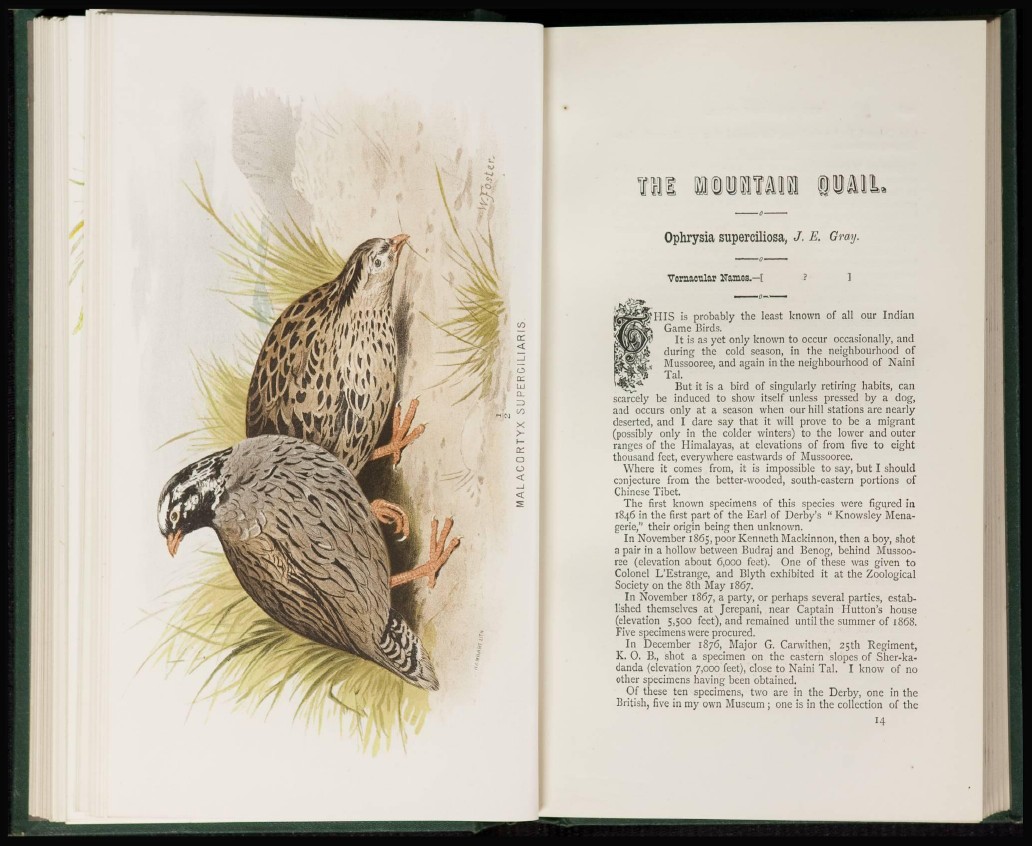
Til i W fM
Ophrysia superciliosa, J. E. Gray.
Vernacular ITamoe.—[ 1
HIS is probably the least known of all our Indian
Game Birds.
It is as yet only known to occur occasionally, and
during the cold season, in the neighbourhood of
Mussooree, and again in the neighbourhood of Naini
Tal.
But it is a bird of singularly retiring habits, can
scarcely be induced to show itself unless pressed by a dog,
and occurs only at a season when our hill stations are nearly
deserted, and I dare say that it will prove to be a migrant
(possibly only in the colder winters) to the lower and outer
ranges of the Himalayas, at elevations of from five to eight
thousand feet, everywhere eastwards of Mussooree.
Where it comes from, it is impossible to say, but I should
conjecture from the better-wooded, south-eastern portions of
Chinese Tibet.
The first known specimens of this species were figured in
1846 in the first part of the Earl of Derby's " Knowsley Menagerie,"
their origin being then unknown.
In November 1865, poor Kenneth Mackinnon, then a boy, shot
a pair in a hollow between Budraj and Benog, behind Mussooree
(elevation about 6,000 feet). One of these was given to
Colonel L'Estrange, and Blyth exhibited it at the Zoological
Society on the 8th May 1867.
In November 1867, a party, or perhaps several parties, established
themselves at Jerepani, near Captain Hutton's house
(elevation 5,500 feet), and remained until the summer of 1868.
Five specimens were procured.
In December 1876, Major G. Carwithen, 25th Regiment,
K. O. B., shot a specimen on the eastern slopes of Sher-kadanda
(elevation 7,000 feet), close to Naini Tal. I know of no
other specimens having been obtained.
Of these ten specimens, two are in the Derby, one in the
British, five in my own Museum ; one is in the collection of the